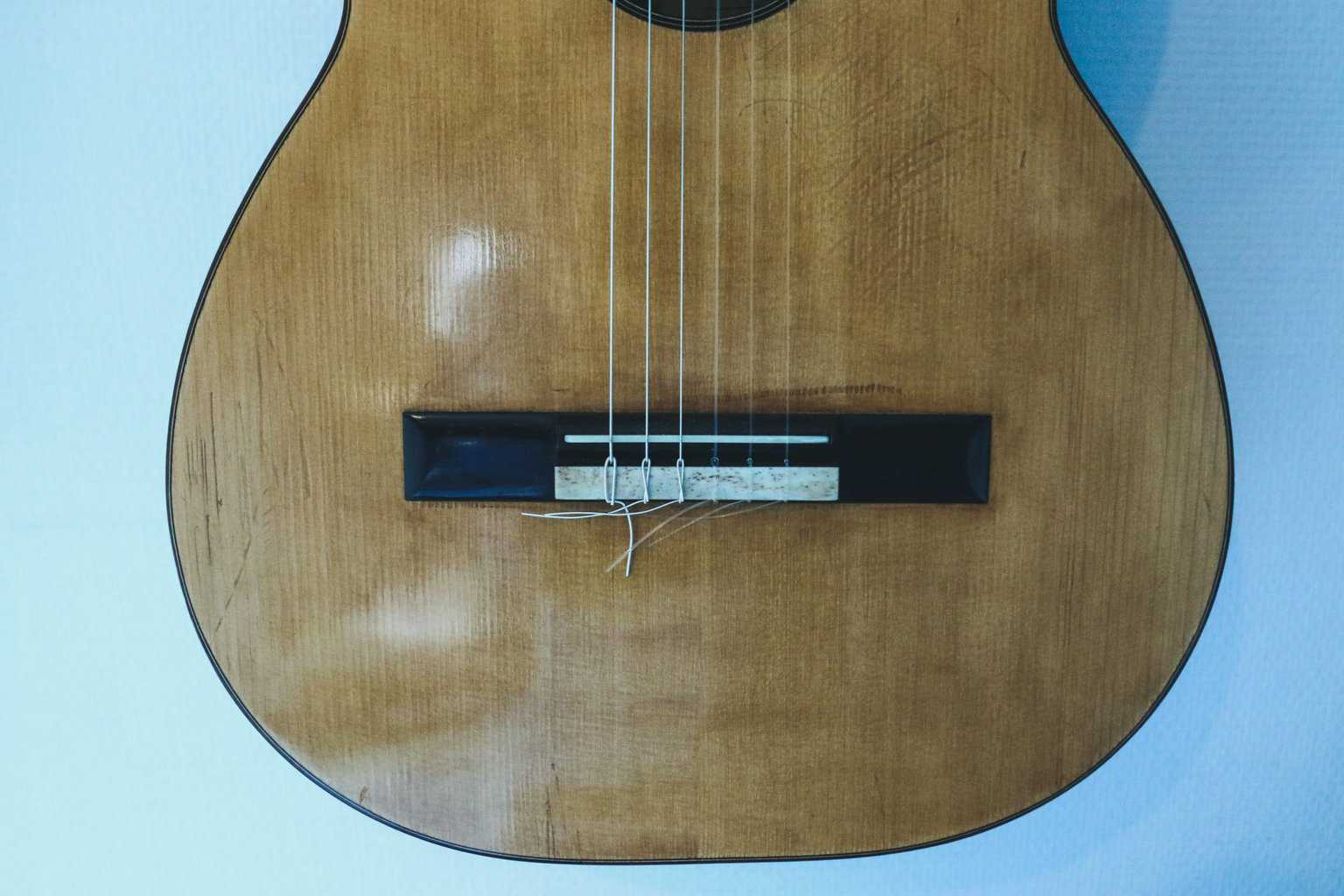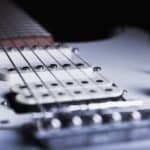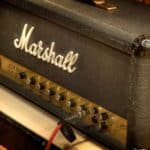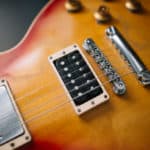Buying guitars can get out of your hands.
Seriously. The number of guitarists who go bankrupt for getting guitars is not small.
Well, I might be exaggerating. But truth is, guitarists love having many guitars.
There are dozens of models and marks to choose from. There are electric, acoustics, and electro-acoustics.
Big-sized guitars. Small-sized guitars.
Collecting them is a never-ending journey.
Now, it is fair mentioning that there are certain guitars not worth buying.
This depends on the taste of each musician. Maybe it has an ugly color, or maybe its shape doesn’t fit their style.
And what about broken guitars? Are they worth your time, money, and effort?
Should you buy one and get it repaired by someone else?
Buying a broken guitar is a good idea. If the issues are minor, then it won’t result in significant, hard-to-tackle efforts. Also, bigger damages can be repaired by a luthier, without leaving any traces behind.
Before your parents kill you for wanting yet another guitar, read this article.
There are lots of aspects to consider on how and why you should get a damaged guitar.
The Devil’s in the details, so you better understand the topic to the full.
Now, here we go!
Are broken guitars a good investment?
A broken guitar isn’t as much of a bad choice as people would think it is.
Certain damaged parts can be easily repaired, even if you are not a luthier.
Of course, one has to consider which parts of the guitar are broken.
In many cases, fixer-uppers result in interesting projects.
Also, you must be aware of how badly the damage is.
If it seems too complicated, then maybe it’s better to get a used guitar that has everything in its right place. Unless you are a professional and know how to repair it, that being said.
All in all, and solely as an investment, repaired guitars could be hard to sell, but might also generate lots of profit for those that know how to work with them.
What are the kinds of damage that can be easily repaired on guitars?
Among the easiest type of damage that you could find are, on the most part, small, replaceable parts. In this category, we find tuning pegs, saddle, pickguard, nuts, or bridge pins.
Also, any cosmetic can be rearranged, even if you consider yourself a non-practical person.
A worn-off finish could be painted over with spray paint (or any other paint, made of polyester, polyurethane, or nitrocellulose).
In the case of acoustics, for example, poorly scratched pickguards can be changed.
Regarding electronics, there shouldn’t arise real issues when replacing parts.
Renewing pickups, switches, pots, or jacks are just a matter of following instructions. There are lots of Youtube tutorials where you can find proper guidance.
When in doubt, it’s better to leave it to an expert. But if you take it as a challenge and want to repair it on your own, then go for it.
Lastly, a damaged or improperly seated fret can be repaired too.
Depending on the type of guitar you are dealing with, will vary the form of removing the fret.
Early Fender guitars, for example, have their frets slid in the fretboard sideways. Thus, when replacing it, you mustn’t pull it straight out.
The method varies depending on the model.
Once more, better safe than sorry. If you don’t understand what you are dealing with, look for someone who does.
You will save frustrations and futile attempts.
What are issues that you should stay away from with broken guitars?
Most often than not, works related to tension are the hardest to fix.
Cracked necks can only be rearranged by professionals. The same goes for the bridge.
All in all, always check for structural damages. If they look bad, they probably are.
Loose ribs on acoustic or semi-hollow guitars are deal-breakers as well.
The problem is not only that they are hard to repair, but it’s also a matter of money and whether it is worth it or not.
Maybe a friend of yours can fix everything right into place and charge you a lesser cost. Sure, take the opportunity.
However, it won’t be a good inversion in the long run if that is not the case.
Bear in mind that big cracks cannot be pasted with glue as if it was a broken shoe.
More details have to be considered before taking action.
So, in conclusion, stay away from structural damages, especially on parts that work with tension.
Can any guitar technician repair a broken guitar?
For the most part, technicians only do light work.
In other words, they generally won’t be able to fix big issues like the ones mentioned above: broken necks, broken bridges, etc.
In those cases, always take the instrument to a luthier. He or she understands those affairs more thoroughly.
There are cases, though, in which technicians are also luthiers.
But again, they will be able to tackle the problem just because they are luthiers.
Remember: replaceable parts and small details can be easily repaired by almost anyone.
Big cracks, and tension work, just by experts in the field.
Is it worth it to buy a broken guitar and repair it?
I encourage beginners not to buy broken guitars.
If you are about to buy your first guitar then, by all means, stay the hell out of a damaged guitar. You are probably not planning to get something that’s already broken, but just in case, it’s worth stating it.
You better buy a used guitar or a cheap one. Once you get used to it and learn the basics, you can acquire a more efficient one.
This is just my advice. The final decision is always yours.
Now, on the other hand, skilled guitarists who know their field can get their hands on a broken guitar.
First of all, if the problems seem easy to tackle, then they won’t require much effort.
Second, it can even turn out to be a very interesting and fun project.
You could gather some friends and restore the guitar together.
One way or another, it will gain lots of personal value, which leads to a much bigger appreciation of the instrument.
Can a repaired guitar be as good as a new one?
It’s a false belief that repaired guitars are worse than new ones.
This is, in part, because many believe that a broken guitar is more likely of breaking again.
It is not.
On the contrary, some mended guitars become stronger than their previous version.
This is the case of instruments where additional wood has been placed. All in all, this reinforces the weakest parts of the instrument.
Such facts should serve as evidence that repaired guitars can sound as good as new ones.
Ultimately, commonly replaceable elements don’t make big, significant changes at the end of the day. This means that no traces or marks will be left behind once the work is done.
In regards to structural repairs, the story is different.
As we have already discussed, they demand a more detailed-oriented approach.
Nonetheless, if a professional addresses the issue, then the guitar will look anew.
Maybe you’ll notice a scar where there was once a wound, but only if the crack was a huge one.
Although, you ought to think about it.
A significant mark can make your guitar look like a warrior, which is pretty cool.
It suffered lots of battles, plenty of music concerts, and rehearsals.
You know, some say that war and art are two sides of the same coin.

Hello there, my name is Ramiro and I’ve been playing guitar for almost 20 years. I’m obsessed with everything gear-related and I thought it might be worth sharing it. From guitars, pedals, amps, and synths to studio gear and production tips, I hope you find what I post here useful, and I’ll try my best to keep it entertaining also.





